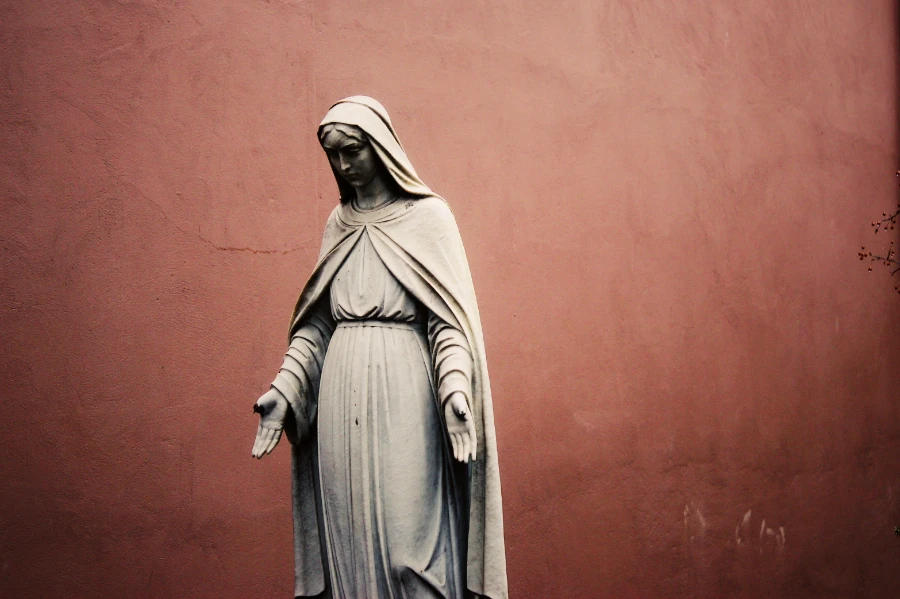The scriptures of Mary Magdalene offer us a unique perspective, both inside and outside of the Bible. Within the New Testament, we find numerous stories of extraordinary women, and among them is the captivating legend of Mary Magdalene. In the last days of Jesus, she played a significant role, despite living in a patriarchal society that often marginalised women.
While the New Testament occasionally showcased women in leadership positions within their congregations, it was a rarity. Mary Magdalene stands out as one such exceptional woman, alongside other remarkable figures like the prophet Anna in the Gospel of Luke (1:1-2:4) or the prophet Junia in Paul’s letters to the Romans (16:7). However, Mary Magdalene holds a special place as the second most renowned woman, after Jesus’ mother Mary, and is undeniably the most fascinating female character in the entire Bible. Her story is shrouded in mystery and has sparked various theories. Some view her as one of Jesus’ devoted followers or even as his wife. Others speculate that she may have been the sister of Martha and Lazarus, while some believe she could be entirely fictional.
In this exploration of the Mary Magdalene story from an alternative source, I will provide you with the information I have at my disposal, allowing you to draw your own conclusions. It is worth noting that Mary Magdalene’s presence is notable since she appears in all the canonical gospels, whereas not all 12 apostles are mentioned in each account. Scholars generally agree that she was a historical figure, but it is essential to remember that consensus does not always guarantee truth. Furthermore, it is important to recognise that Mary, or Maria in Greek, was an incredibly common name during that time in ancient Palestine.
Scriptures Of Mary Magdalene in orthodox Christianity
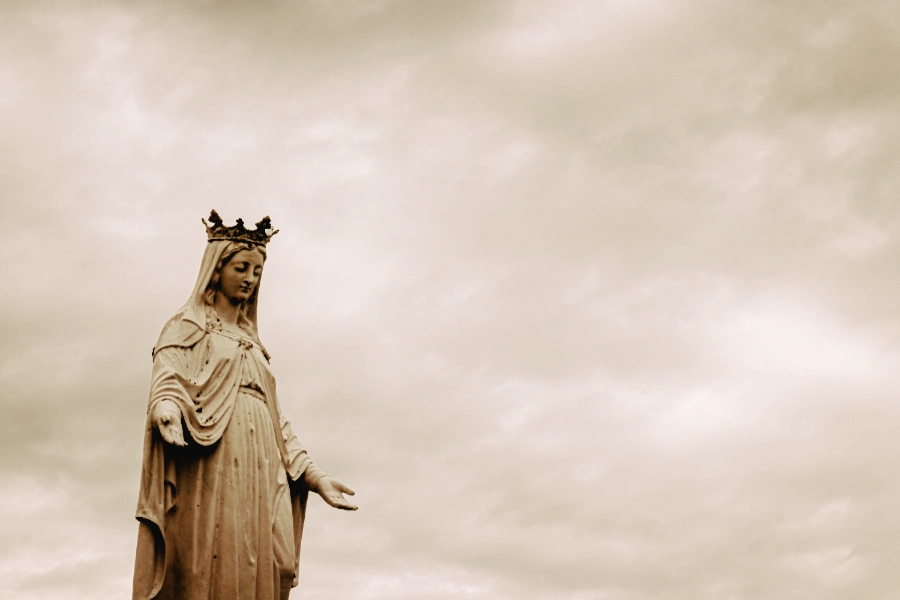
Understanding Mary Magdalene’s Role in the Bible
It is fascinating to note that Mary Magdalene is mentioned 12 times in the New Testament. While it is possible that she played an even more significant role in orthodox Christianity in earlier times, the scarcity of manuscripts from the 1st to 3rd centuries leaves this as mere speculation. However, scholars have compelling reasons to believe that this may have been the case. Let’s delve into the four canonical Gospels to explore the instances where Mary Magdalene is referenced. It is important to acknowledge that the authors of the Gospels remain unknown, as these texts were written long after the apostles’ potential lifetimes. For the sake of convenience, we will stick to the commonly accepted names of the Gospels.
The Role of Mary Magdalene in the Gospel of Mark

The gospel of Mark holds a special place among scholars as the very first Gospel ever written. It is fascinating to note that Mary, a significant figure, is introduced later in Mark’s gospel, where she takes on the role of a witness during Jesus’ crucifixion.
The crucifixion in Mark
According to the composer of Mark, when Jesus was being observed from afar, only two women were specifically identified by their names. These remarkable women were none other than Mary Magdalene and Mary, who was the mother of Joses, as referred to in Greek as Joseph.
The Burial in Mark
In the book of Mark, specifically in Mark 15:4, we learn that both Mary Magdalene and Mary the mother of Joses were present at the burial site of Jesus. It is fascinating to see how these two women, who played significant roles in Jesus’ life, were also witnesses to the location where his body was laid to rest. Their presence adds depth and authenticity to this important event in history.
The Resurrection in Mark
On the following Sunday, Mary Magdalene and the women made their way to the tomb. To their astonishment, they discovered that the enormous stone blocking the entrance had been rolled away. Inside, a young man dressed in radiant white robes greeted them and conveyed the incredible news: Jesus had risen. Overwhelmed with fear, the women kept this extraordinary encounter to themselves, unsure of how to share such a miraculous revelation. And with this remarkable event, the Gospel of Mark comes to a close.
A quick note:
There exists a more extensive rendition of Mark, which has been widely accepted by scholars as a later composition by a different author. This particular writer likely had some familiarity with Luke and may have been acquainted with Matthew as well. Notably, they included an additional ending where Jesus first appears to Mary Magdalene. The author even mentions encountering Mary, the one who had been healed from seven demons. This unique reference to Luke’s account will be examined in greater depth later on.
The Role of Mary Magdalene in the Gospel of Matthew
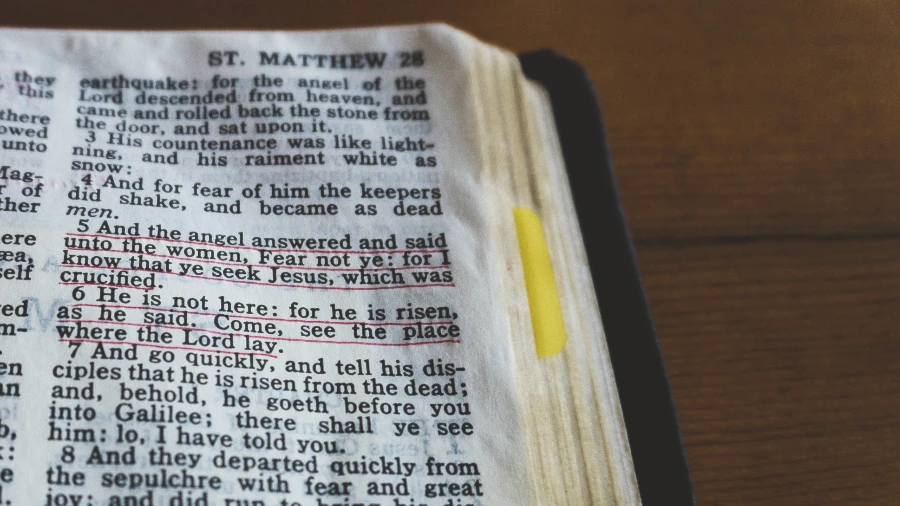
According to scholars, Matthew was written after Mark and just before Luke. It is clear that Matthew and Luke drew inspiration from Mark, as linguistic analysis reveals. Interestingly, Mary Magdalene appears in Matthew in the same places as in Mark, indicating that Mark was indeed Matthew’s primary source. However, Matthew’s author did make some corrections and improvements, even refining Mark’s Greek. Notably, Matthew introduces one significant event… but let’s delve into the details of Matthew’s narrative.
The crucifixion in Matthew
According to Matthew 26:55-56, there were several remarkable women who stood witness to the death of Jesus from a distance. Among them were Mary Magdalene, Mary the mother of James and Joseph, as well as the mother of the sons of Zebedee. Their presence during such a significant event highlights their profound connection to Jesus and their unwavering faith.
The Burial in Matthew
In the biblical passage of Matthew 27:61, it is fascinating to note that both Marys found themselves standing directly across from the grave. This intriguing detail adds depth and significance to the narrative, shedding light on the profound emotions experienced by these two women during such a pivotal moment in history.
The Resurrection in Matthew
Matthew’s account of Jesus’ resurrection closely mirrors Mark’s, but with an intriguing addition. Upon Mary’s return to the tomb, an unexpected earthquake shook the ground, revealing an angel descending from heaven. This angel, radiating power, rolled away the stone and confidently settled upon it. Naturally, both the women and the guards were overcome with fear. However, the angel reassured them, urging them not to be afraid. The angel reminded them of Jesus’ previous message, that they would encounter him in Galilee. Their task now was to go and share this incredible news with the other disciples: Jesus had risen from the dead. Before they had a chance to relay this extraordinary encounter, Jesus himself appeared before them, offering a warm greeting. Overwhelmed, the women fell to their knees. Jesus, sensing their timidity, comforted them, assuring them that there was no need to be afraid. He reiterated that they would indeed meet him in Galilee, urging them to recount their remarkable experience to the others.
The Role of Mary Magdalene in the Gospel of Luke
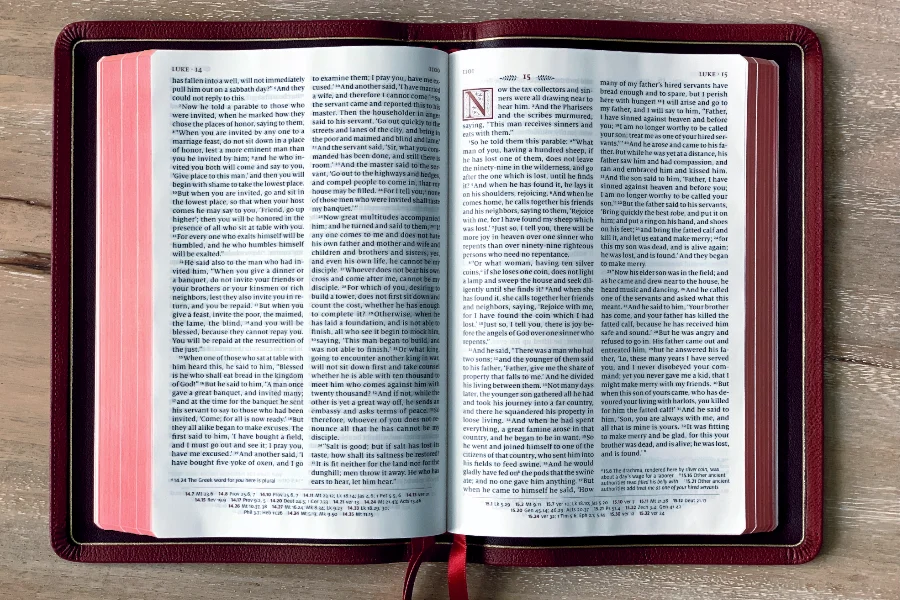
The Gospel of Luke was created by its author by drawing from different sources such as Mark, parts of Matthew, and possibly a lost Gospel known as Q. This lost Gospel, referred to as Q because of the German word “Quelle” meaning source, is believed by many scholars to have been used by Luke and Matthew in addition to Mark to create their own narrative. It is important to note, however, that there is no concrete evidence to support the existence of a Q-text. Some scholars argue that Luke and Matthew may have been making things up, aligning with the perspective put forth by atheist scholar Dr. Richard Carrier that religious institutions have a tendency to shape history. Additionally, there have been suggestions that the author of Luke could be a woman, given the prominent and influential role of women in the Gospel.
Unlike Mark and Matthew, Luke introduces the character of Mary at the beginning of the narrative, emphasising her significance. The author of Luke also takes the liberty to modify Mark’s account to suit their own agenda. In Luke, Jesus is depicted as traveling through cities and towns with his 12 disciples, encountering women possessed by “wicked” spirits along the way.
Mary Magdalene was set free from 7 demons by Jesus

Mary Magdalene, a woman of influence, found herself under the influence of wicked spirits. According to Luke, Mary experienced a miraculous healing at the hands of Jesus, who cast out seven demons from her. Accompanying Mary were two other women, Joanna and Susanna, who showed their gratitude to Jesus and his group by providing them with sustenance, including food, drinks, and possibly even financial support. While the text leaves room for speculation regarding the exact nature of this support, it is clear that Mary held a significant position among these women, who appeared to possess considerable wealth and resources.
The crucifixion in Luke
Luke’s account of the crucifixion event differs from Mark’s in one significant aspect. While Mark mentions the names of the women who were witnesses of Jesus’ death, Luke chooses not to include their names in his narrative. This small but noteworthy difference can be found in Luke 23:49.
The Burial in Luke
Luke 23:55 reveals an intriguing detail – the women were not only present during the burial of Jesus, but they also possessed knowledge of the exact resting place of his tomb.
The Resurrection in Luke
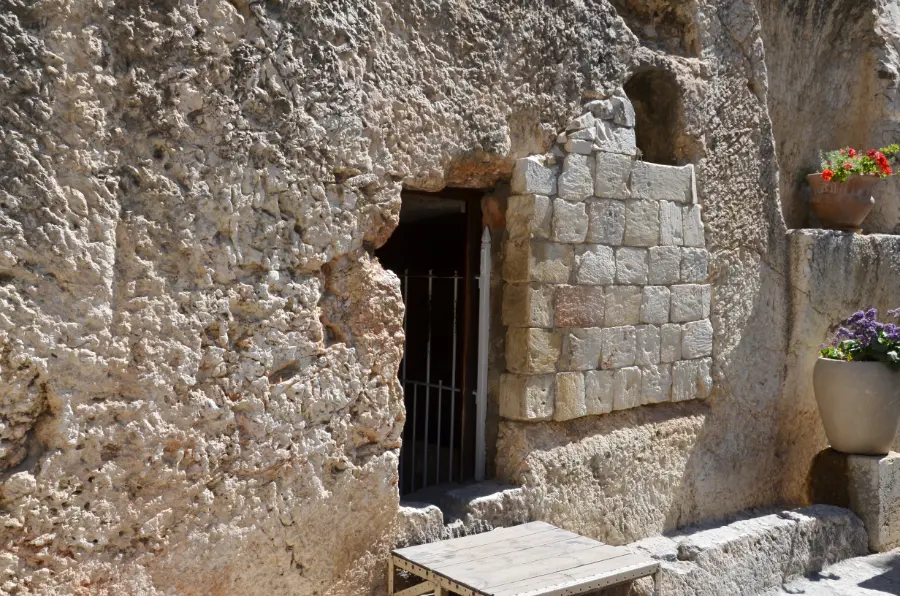
Like the author of Matthew, the writer of Luke felt that the ending of Mark’s Gospel needed more substance and added additional text to enhance the narrative. In Luke’s account, the women who went to the grave discovered that it was open and the stone had been rolled away. Inside the tomb, they encountered two men, which understandably left them perplexed and afraid. These two men reminded the women of what Jesus had previously told them – that he would be handed over to the authorities, crucified, and then rise from the dead on the third day. Upon hearing this, the women recalled Jesus’ words and hurried to inform the disciples. Peter, in particular, was astonished when he arrived at the grave and found it empty. The absence of the body led him to believe that the resurrection had indeed taken place. In Luke’s Gospel, Jesus appeared first to Peter, and then later to the other apostles. This differs from the account in Mark’s Gospel, where Jesus appeared first to Mary. It is possible that there were multiple traditions circulating, and Luke either was unaware of this or chose to emphasise this particular one.
The Role of Mary Magdalene in the Gospel of John
The Gospel of John stands out among the synoptic Gospels with its unique narrative, offering a fresh perspective on the life of Jesus. However, when it comes to the passion story, we find intriguing overlaps between John’s account and that of the synoptic Gospels. Despite their distinctive approaches, these narratives converge in capturing the profound significance of Jesus’ final moments.

In the Gospel of John, Mary Magdalene is depicted as a witness to the crucifixion, alongside Mary, the mother of Jesus, and an unnamed beloved disciple. This Gospel, believed to have been written around the year 100, is the most recent of the four Gospels in the New Testament. It is important to note that although traditionally attributed to John, the author would have passed away long before its composition.
The crucification in John
In the Gospel of John, Mary Magdalene is mentioned as being part of a group of women. However, this Gospel also includes other important female figures, such as Jesus’ mother (although her name is not specified) and his mother’s sister, Mary, who is the wife of Clopas. Additionally, John, the beloved disciple of Jesus, is also mentioned in relation to this group. These individuals play significant roles in the narrative, offering insights into the close relationships and support network that surrounded Jesus during his ministry.
The Burial in John
In contrast to the other Gospels, where Mary Magdalene is depicted as present during the burial, John’s Gospel takes a different approach. Here, Mary Magdalene is not included in the account of the burial. This divergence in perspectives among the Gospels adds depth and complexity to the overall narrative, highlighting the varied perspectives of the individuals involved in the events surrounding Jesus’ death and resurrection. By omitting Mary Magdalene from the burial scene, John’s Gospel invites readers to consider alternative viewpoints and interpretations, underscoring the multifaceted nature of this significant moment in Christian history.
The Resurrection in John
In the book of John, an intriguing account unfolds where Mary Magdalene, on her own, makes a remarkable discovery – an empty tomb. Unlike other versions, she is not accompanied by a group of women. According to the gospel of John, the mysterious beloved disciple arrives at the grave before anyone else, followed by Simon Peter. Together, they witness the presence of only the white linen that had covered Jesus’ body. Both men depart, leaving Mary Magdalene behind. Undeterred, she peers once more into the sacred space and is astonished to see two angels. Filled with deep concern, she queries their whereabouts, unaware that Jesus, standing behind her, is listening. Mistaking him for someone else, Mary, with tear-filled eyes, recounts how her beloved Master has been taken away.
It is at this moment that Jesus tenderly utters her name, “Mary!” Overwhelmed with emotion, she joyfully exclaims, “Rabbouni,” meaning “teacher” in Hebrew. As she realizes the incredible truth that it is indeed Jesus standing before her, he reassures her that he has not ascended to their Father yet. Filled with excitement, Mary Magdalene rushes to share this extraordinary encounter with the Apostles.
Where Is Mary Magdalene In The Bible?
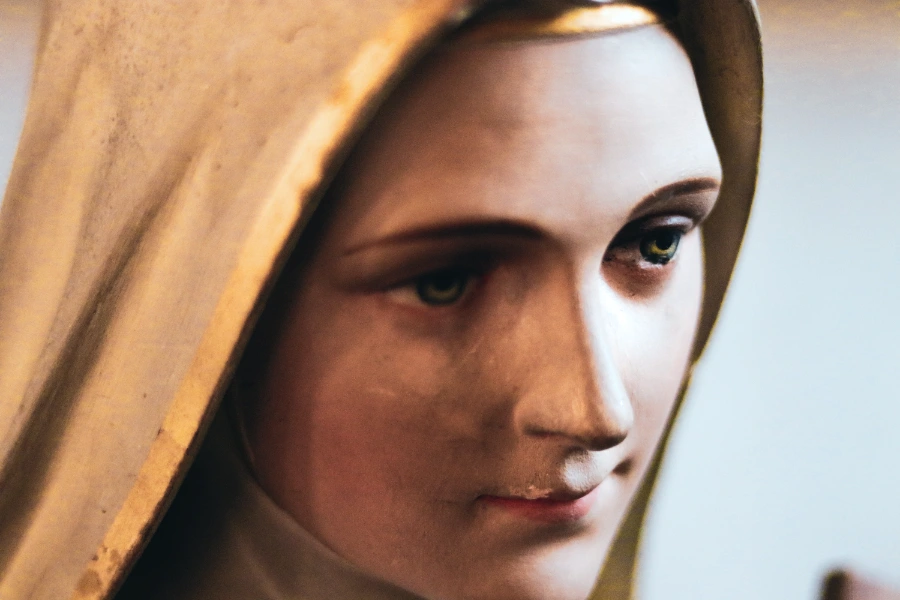
The question of Mary Magdalene’s role in the New Testament does not have a straightforward answer. Although her name appears in various places, notably in the Gospel of Luke, as well as in John’s gospel and the Book of Acts (which scholars believe to have the same author), her story and significance are not always clear. While many scholars believe she likely played a significant role in the early church, there is also the possibility that she was either forgotten or intentionally omitted later on. Some argue that her mentions in the Gospels are more due to her connection to Jesus rather than her personal importance. Below, I have provided a list of the mentions of Mary Magdalene in the Gospels.
Mentions of Mary in the Gospel of Mark
- The short ending of Mark 16:8
- The long ending of Mark 16:9 (this is another author than the original writer of Mark)
- 15:40
- 47
- 9
In the different versions of Mark’s Gospel, there are both long and short endings, each offering a distinct perspective. Interestingly, it is only in the concluding section of Mark’s Gospel that Mary makes her appearance.
Mentions of Mary in the Gospel of Matthew
- 27:56
- 47
- 61
- 28.1
Mentions Mary in the Gospel of Luke
- 8:2
- 24:10
Mentions Mary in the Gospel of John
- 19:25
- 20:1
- 11
- 18
Were Martha and Mary Magdalene the Same Person in the Gospel of John?
To demonstrate the intricacy of examining early Christian writings, a captivating video has been included. In this video, esteemed experts engage in a thought-provoking discussion about whether Martha was added to the Gospel of John at a later point in time. Martha, believed to be the sister of Mary Magdalene, becomes the focal point of analysis. Elizabeth Schrader, a renowned authority on the figure of Mary Magdalene, provides her insights during an insightful interview, exploring the possibility that Martha and Mary Magdalene were initially considered as a single individual.
Scripture Of Mary Magdalene in Gnostic Christianity

Gnostic Christianity sets itself apart from modern Christianity by embracing a unique perspective. This ancient form of Christianity, unlike its counterparts, managed to survive the test of time, largely due to its adoption as the state religion during the reign of Roman emperor Constantine in the 3rd century AD. What distinguishes Gnostic Christianity is its belief that the kingdom of God can only be attained through knowledge, or gnosis. Our understanding of this intriguing branch of Christianity is primarily derived from the Nag Hammadi library, which contains a few notable references. Among the key documents we possess, there is a prevailing assumption that the authors make specific mention of Mary Magdalene.
She is mentioned in the following scripts:
- The Gospel of Thomas
- The Gospel of Philip
- The dialogue with the Saviour
- Pestis Sophia
- And the Gospel of Mary
The Gospel of Mary
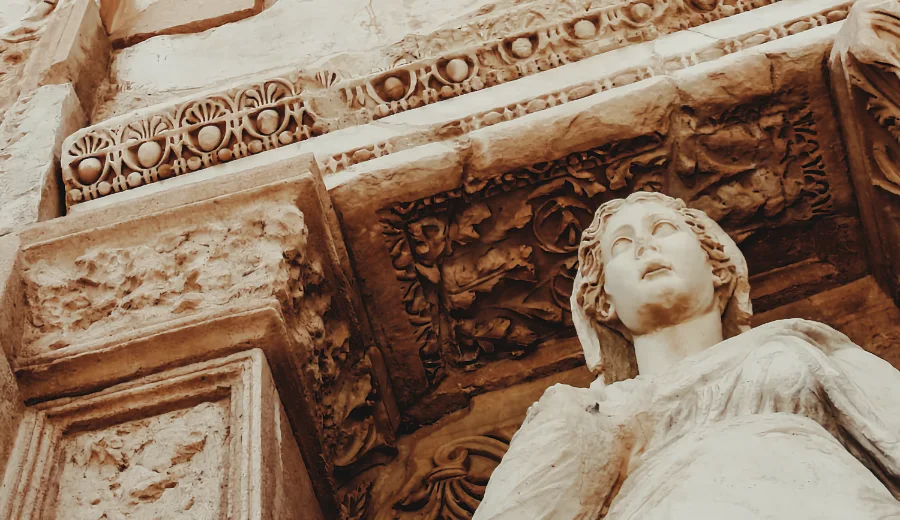
The Gospel of Mary has recently gained significant attention, largely due to its portrayal in the movie “The Da Vinci Code,” where Tom Hanks played Professor Robert Langdon, a symbolist from Harvard University. The film even suggested the intriguing possibility that Mary and Jesus were married. But what does this text really entail? The Gospel of Mary asserts that Mary Magdalene had exclusive visions and conversations with Jesus Christ that no other human, not even the apostles, were privy to. A similar story of “secret knowledge” can be found in the Gospel of Judas, where Judas is depicted as Jesus’ favourite.
These narratives are characteristic of Gnostic writings, which claim to possess mysterious and unknown information about the truth of Jesus and his teachings. It is worth noting that these stories do not appear in any other part of the New Testament. The evidence supporting the authenticity of the Gospel of Mary is weak, leading some scholars to believe that it was created to promote veneration of Mary Magdalene. Nonetheless, these Gnostic texts provide valuable insights into how different Christian groups contemplated the events surrounding Jesus’ preaching of the kingdom of heaven and the fulfillment of messianic prophecies.
When was the Gospel of Mary written?
The scholars widely believe that the Gospel of Mary was crafted during the 2nd century AD. At the renowned excavation site of Oxyrhynchus in Egypt, three small papyrus fragments written in Greek were discovered. Sadly, these fragments do not offer any fresh insights into the text.

In what language is the Gospel of Mary written?
The Gospel of Mary was originally written in ancient Greek, but the existing copy is in Coptic, the common language spoken in ancient Egypt.
Who is the author of the Gospel of Mary?
This text was authored by devoted adherents of Gnosticism, who were deeply committed to their distinctive tradition and philosophical framework.
Gospel of Mary Magdalene pDF
It is worth noting that the Gospel of Mary is not fully preserved, with pages 16 and 11-14 unfortunately missing. As a result, the entirety of the Gospel of Mary that we currently have access to spans less than 8 pages.
What Does the Gospel of Mary Contain?
The Gospel of Mary exhibits distinct Gnostic influences, including the concept of the soul’s ascension through the four levels of the cosmos and its examination by the four powers. Knowledge plays a pivotal role, enabling the soul to navigate these powers and attain salvation. Interestingly, this narrative bears resemblance to elements found in Greek mythology.
Comparison with Greek mythology
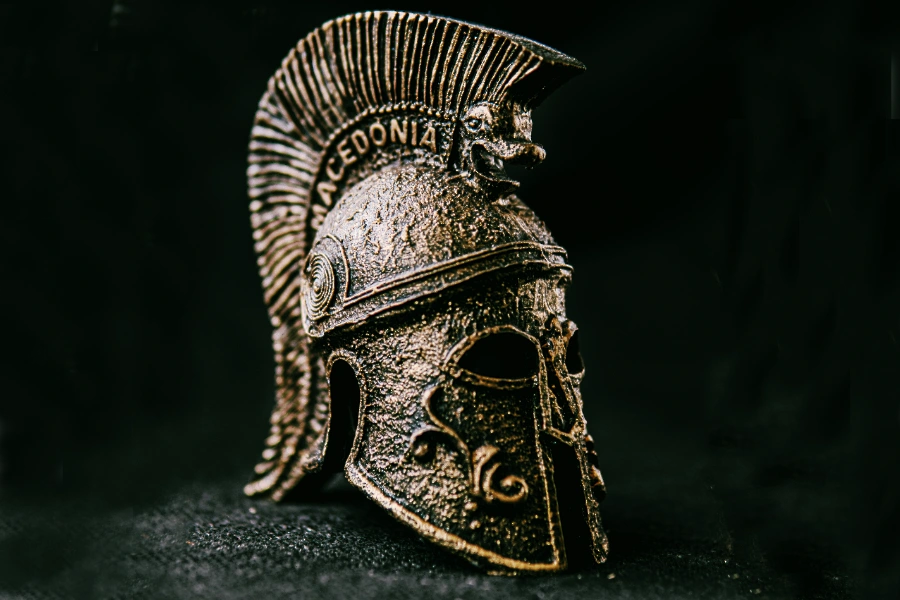
In ancient mythology, there is a fascinating belief that the deceased must pay a fee to Charon, the boatsman, in order to be guided across the river Styx, which separates the world of the living from the realm of the dead. This payment, known as an “obelus,” is given to the skipper as a way to ensure that he fulfils his duty. Without this payment, individuals would have to wander for a hundred years before being able to enter the world of the dead. As part of the funeral ceremony, it is customary to place two coins on the eyes of the deceased. This tradition draws parallels between the role of Charon and the concept of knowledge or gnosis in Gnostic Christianity, both serving as keys to reaching a form of “paradise.” In Greek mythology, the voyage across a river serves as a symbolic barrier, just as the Gnostics face four powers and four levels as their own barriers. The only difference lies in the manner in which they are able to cross to the other side.
Is the Gospel of Mary Anti-Feminine?

Another prominent characteristic of Gnosticism reflects the prevailing cultural mindset of a highly male-dominated era. In this belief system, only men were deemed worthy of reaching heaven, as they were considered superior beings. Evidence of this perspective can be found in Mary (7,9) where it is stated, “Jesus prepared us and made us into men,” as well as in the Gospel of Thomas, specifically in Thomas 114, which asserts that women must transform themselves into males in order to gain entry into the Kingdom of Heaven. Moreover, the Gospel of Thomas makes mention of a leader named Mary within the congregation, although scholars cannot definitively confirm whether this refers to Mary Magdalene, as the name Mary was quite common during that period.
other Gnostic findings let us understand the Gospel of Mary
The majority of writings that have been uncovered can be attributed to the Nag Hammadi library, a significant find that has provided us with numerous Gnostic writings. This discovery has allowed scholars to examine these texts and analyze their similarities and differences, gaining valuable insights into their distinct characteristics.
Where was the Gospel of Mary found?
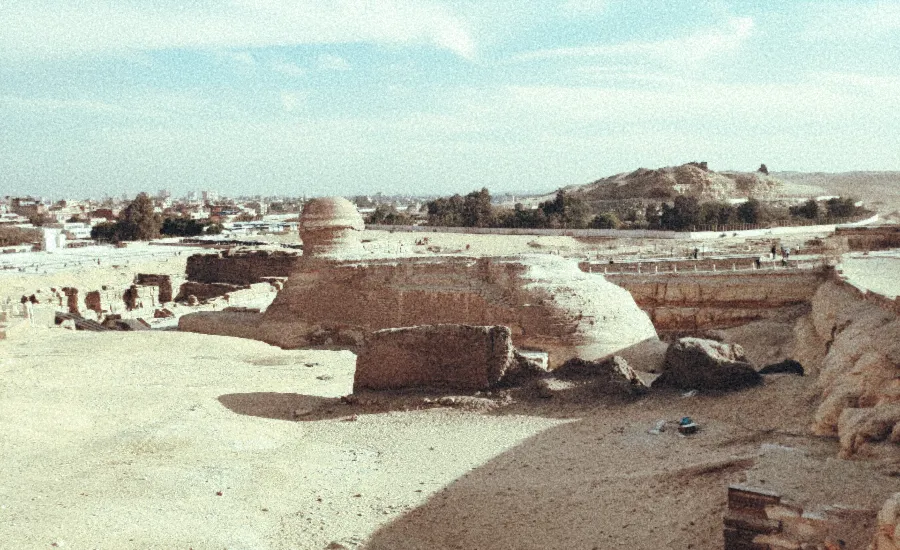
Fascinatingly enough, the Gospel of Mary did not originate from the Nag Hammadi collection. Instead, it was discovered within the Berlin Codex, a text unearthed in Akhmim, Egypt in 1896 by the esteemed German scholar Carl Reinhardt. Reinhardt subsequently transported the codex to Berlin, hence its name, the Berlin Codex or Akhmim Codex. Alongside the Gospel of Mary, this codex also contained the Apocryphon of John, the Sophia of Jesus Christ (both of which were also found in Nag Hammadi), and the Act of Peter. Surprisingly, the Berlin Codex remained unpublished until 1955, despite its valuable contents.
What is the context in the Gospel of Mary?
The Gospel of Mary takes us on a captivating journey through the eyes of Maria (Mary) Magadla, the chosen one to receive the profound knowledge of the keys to heaven from Jesus himself. Even after Jesus’ passing, Mary became a source of solace for the grieving disciples, reminding them of the immense love and greatness of their savior. Peter’s words of praise, acknowledging Jesus’ unique affection for Mary, highlight the special bond she shared with him in this remarkable tale.
Mary’s vision of Jesus

Mary is recounting an extraordinary vision to the disciples, in which she had a remarkable encounter with Jesus himself. In this stunning vision, Jesus conveyed his deep appreciation to Mary for both recognizing him and being receptive to his presence. Curiously, Mary posed a question to Jesus, pondering how he, as the savior, is able to perceive visions through the soul and spirit. Jesus kindly clarified that while he cannot directly witness the soul or spirit, he has the ability to perceive visions through the intermediary of the mind. Regrettably, we have encountered a setback as pages 11 – 14 appear to be missing from the copy we have obtained.
Andrew and Peter doubt Mary’s vision
Upon sharing her firsthand experience of encountering Jesus, Mary faced doubt from Andrew while Peter confirmed this skepticism regarding her meeting with the resurrected savior. It appeared that Peter harbored a sense of jealousy towards Mary, as she had received a vision and enjoyed a closer relationship with Jesus compared to the other disciples during his earthly presence. This sentiment is further validated by Levi, who attests to Jesus’ special affection for Mary, making her his preferred disciple among all those who followed him.
Scriptures Of Mary Magdalene the Summary
During its early years, Christianity had a multitude of theological branches that were possibly even more diverse than we are aware of today. As time went on, the teachings of these branches underwent changes due to ideological differences, errors in the copying of texts, or scribes attempting to fill in gaps from other copies. One interesting theory suggests that Mary Magdalene may have been an apostle of Jesus and a leader within her congregation. Evidence supporting this theory can be found within the canon itself and in the writings of Gnostic groups. However, it appears that the patriarchal influence within the orthodox church may have altered this perception.
Before Johannes Gutenberg invented the printing press, the Bible documents were manually copied by both amateurs and later professionals, resulting in various errors and selective content based on their personal preferences and ideologies. The truth regarding the existence of Mary Magdalene, the disciples, or even Jesus himself remains unknown and open to interpretation. Nonetheless, the story surrounding Mary Magdalene is undeniably captivating and holds significant importance given the strong influence of Christianity on Western culture.
FAQ
Did Jesus heal Mary Magdalene?
Indeed, as stated in the Gospel of Luke, a remarkable account reveals that Jesus performed a miraculous healing on Mary Magdalene, freeing her from the torment of not just one, but seven demons. It is the only account which writes about it. So, it seems like a good story, though.
Where is the story of Mary Magdalene in the bible?
The story of Mary Magdalene, a prominent figure in the Bible, can be found in various sections of the holy book. Specifically, her presence is acknowledged in both the Gospel of Luke and John’s gospel. However, the exact nature of her role and significance remains uncertain. Scholars widely believe that Mary Magdalene likely held a substantial position within the early church, but over time, her importance was either overlooked or intentionally omitted from historical accounts.
Why was the Gospel of Mary not included in the New Testament?
There are multiple explanations for this intriguing omission. A plausible theory suggests that it was purposefully excluded due to its conflict with the biblical narrative of Jesus’s life and resurrection. Some scholars argue that the early Christian community held the belief that female prophets were not valid, leading them to dismiss Mary Magdalene’s role and instead assert that she ascended to heaven after her passing.
What happened to Mary Magdalene after the resurrection?
In Ephesus, she resided alongside St. John before ultimately meeting her demise in the western region of Turkey, as per the accounts documented in eastern tradition.
How did Mary Magdalene know where Jesus was buried?
In the Gospel of Mark, an intriguing account reveals that Pontius Pilate entrusted the body of Jesus to Joseph of Arimathaea, a close companion of both Pilate and Jesus. Additionally, the synoptic Gospels recount that a dedicated group of women faithfully followed the lifeless body of Jesus to his final resting place.
When does Mary Magdalene Meet Jesus?
As per the Gospel of Luke, it is believed that Jesus encountered Mary during his ministry in the region of Galilee.
Was Mary Magdalene a Prostitute?
According to Pope Gregory, following the downfall of the Roman empire, he put forth the idea that Mary Magdalene and Mary of Bethany were actually one and the same. However, it’s important to note that this was merely an assumption made by the Pope, and it was predominantly western society that embraced this belief throughout the passing centuries. It’s worth mentioning that this idea was never adopted by the eastern church.

